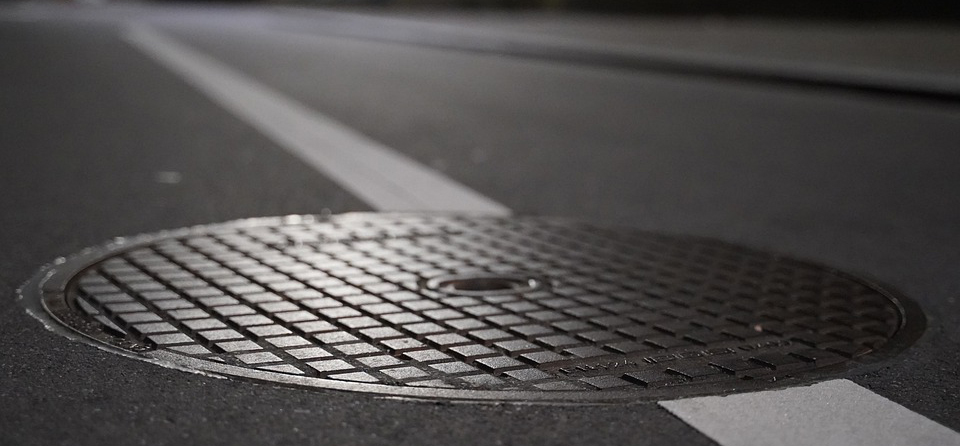Underground utilities mapping

|
| This article was written by Adam Kirkup, engineering communities manager at ICE and first appeared on the ICE blog news site entitled 'ICE and BSI launch revised standard to map underground utilities' dated May 10 2022. for further information on the updated PAS 128 standard please visit the BSI website directly. |
Contents |
[edit] ICE and BSI launch revised standard to map underground utilities
The updated PAS 128 standard provides users with a consistent approach to gain more accurate visibility of water, sewer, electric networks, and more. The UK will be able to better map its underground utility networks after an update of PAS 128, the standard governing utility surveys.
ICE sponsored the revised British Standards Institute (BSI) standard, which specifies how to detect, verify and locate new and existing underground utilities, such as water, sewer, and electric.
[edit] PAS 128 updated
PAS 128, updated from the 2014 edition, aims to improve the accuracy of underground utility network maps with the following additions:
- Guidance on training and qualifications of practitioners,
- Updates to the application of post processing in detection surveys,
- New specification for buried utility detection and avoidance to support on-site permits to break ground,
- Guidance on the accuracy of detection methods, and
- Guidance on the technical factors that dictate the effort required for a detection survey.
- The standard also sets out the data accuracy required, the data quality expected and means by which to assess and indicate the confidence that can be placed in such data.
[edit] PAS 128 topics
The mapping of underground networks includes active, abandoned, redundant, or unknown underground utilities and the location of their associated surface features like manhole covers and utility markers.
It applies regardless of where these utilities are found, including urban or rural areas, in the street, or on private sites such as hospitals or airfields.
The updated PAS 128 covers the following topics:
- Project planning and the scoping process,
- The classification system for quality levels based on survey type, location accuracy, inclusion of post-processing and level of supporting data,
- Desktop utility records search,
- Detection,
- Verification,
- Location, and
- Deliverables.
- Who is PAS 128 for?
The standard is designed for use by practitioners such as surveyors, geophysicists, and subsurface utility engineers.
It can also be used by clients such as engineers, constructors, project managers and utility owners who are responsible for recording information about underground utilities.
[edit] Why use PAS 128?
PAS 128 on underground utility detection can lead to more effective planning and safer execution of street works, civil works, ground works and utility-based activities.
Some of the benefits of using the standard include:
- Provides clarity about the service provided and methods employed, a consistent approach to data capture, and accountability for the work undertaken.
- Indicates the presence or absence of underground utilities before conducting further ground investigation, prior to breaking ground.
- Supports the detection, location, and avoidance of buried services.
- Enables better informed decisions using more complete, up-to-date, and accurate data, helping ensure the safety and timely progress of site development.
- Prevents or reduces conflicts, delays, unnecessary work, damage to third party assets, utility service disruptions, redesigns, personal injuries and even loss of life.
- Supplies data that could lead to unrealised benefits, such as the use of remote robotic techniques that reduce the need for intrusive maintenance.
- Improves asset modelling capabilities.
- Helps manage risk, improve efficiency, and develop users’ expertise.
--Institution of Civil Engineers
[edit] Related articles on Designing Buildings
Featured articles and news
The benefits of engaging with insulation manufacturers
When considering ground floor constructions.
Lighting Industry endorses Blueprint for Electrification
The Lighting Industry Association fully supports the ECA Blueprint as a timely, urgent call to action.
BSRIA Sentinel Clerk of Works Training Case Study
Strengthening expertise to enhance service delivery with integrated cutting-edge industry knowledge.
Impact report from the Supply Chain Sustainability School
Free sustainability skills, training and support delivered to thousands of UK companies to help cut carbon.
The Building Safety Forum at the Installershow 2025
With speakers confirmed for 24 June as part of Building Safety Week.
The UK’s largest air pollution campaign.
Future Homes Standard, now includes solar, but what else?
Will the new standard, due to in the Autumn, go far enough in terms of performance ?
BSRIA Briefing: Cleaner Air, Better tomorrow
A look back at issues relating to inside and outside air quality, discussed during the BSRIA briefing in 2023.
Restoring Abbotsford's hothouse
Bringing the writer Walter Scott's garden to life.
Reflections on the spending review with CIAT.
Retired firefighter cycles world to raise Grenfell funds
Leaving on 14 June 2025 Stephen will raise money for youth and schools through the Grenfell Foundation.
Key points for construction at a glance with industry reactions.
Functionality, visibility and sustainability
The simpler approach to specification.
Architects, architecture, buildings, and inspiration in film
The close ties between makers and the movies, with our long list of suggested viewing.
SELECT three-point plan for action issued to MSPs
Call for Scottish regulation, green skills and recognition of electrotechnical industry as part of a manifesto for Scottish Parliamentary elections.
UCEM becomes the University of the Built Environment
Major milestone in its 106-year history, follows recent merger with London School of Architecture (LSE).
Professional practical experience for Architects in training
The long process to transform the nature of education and professional practical experience in the Architecture profession following recent reports.
A people-first approach to retrofit
Moving away from the destructive paradigm of fabric-first.
New guide for clients launched at Houses of Parliament
'There has never been a more important time for clients to step up and ...ask the right questions'
The impact of recycled slate tiles
Innovation across the decades.
EPC changes for existing buildings
Changes and their context as the new RdSAP methodology comes into use from 15 June.



























